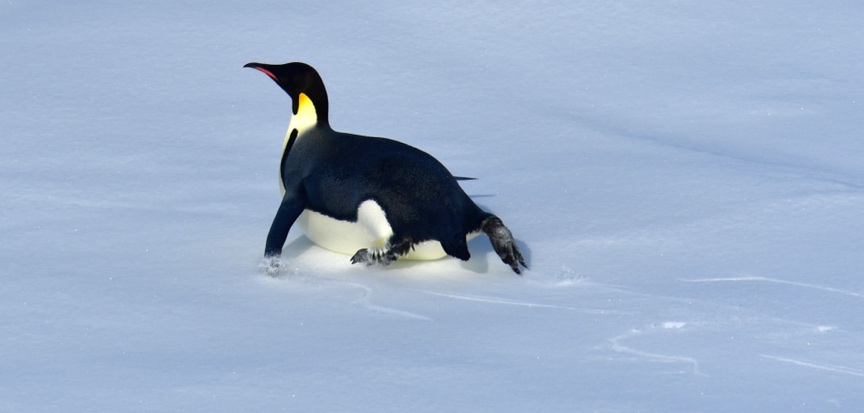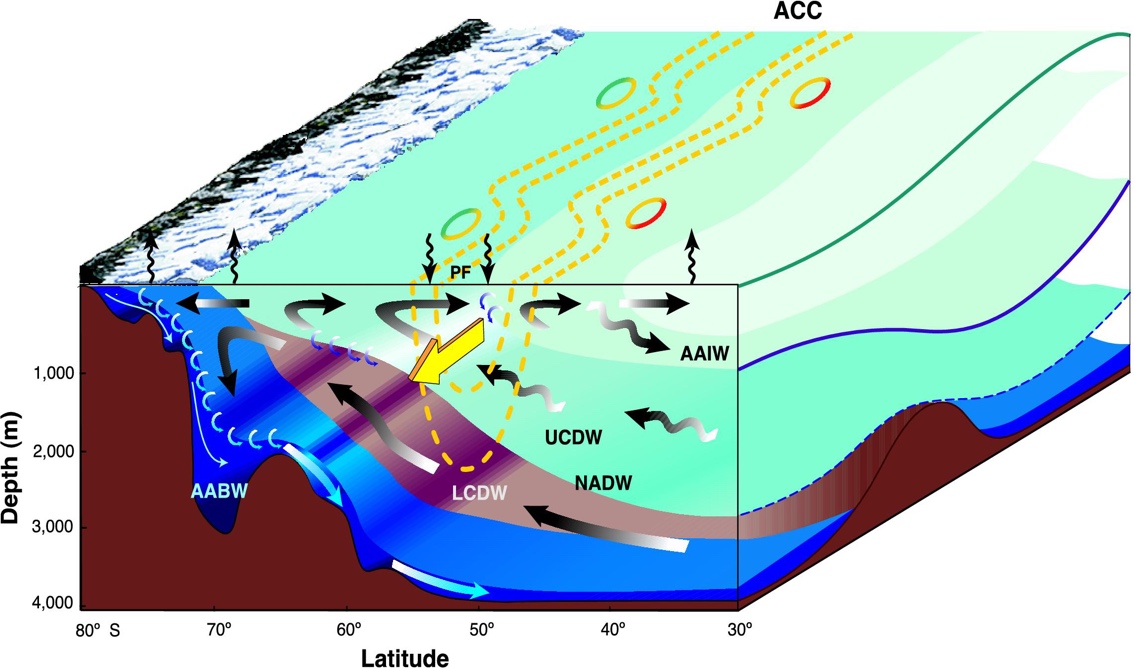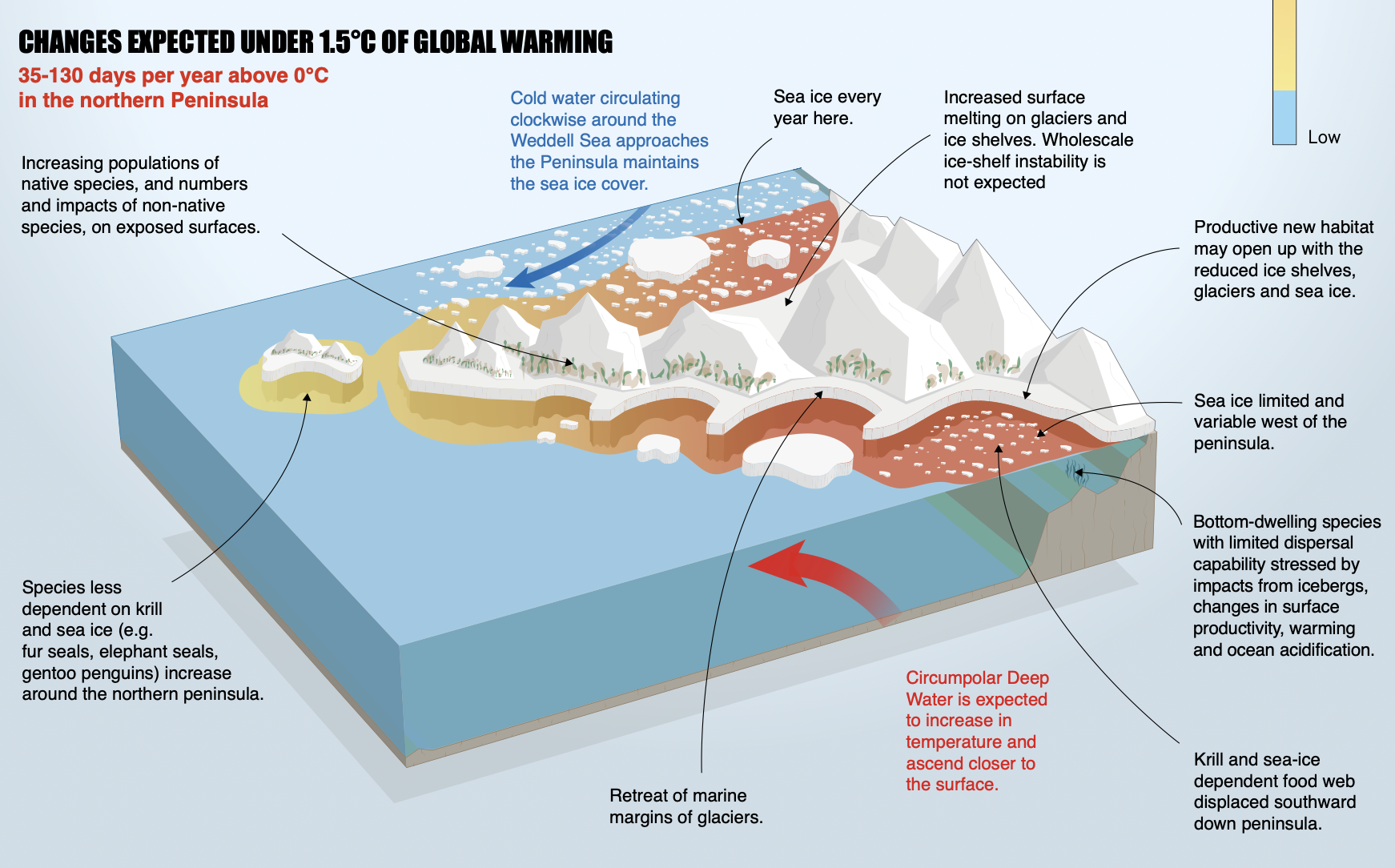The Antarctic#
In the second lecture, we will head to the other end of the planet to explore the waters around Antarctica.

An Emperor Penguin, in the Weddell Sea, 2023 [photo credit: Pete Enderlein]#
In contrast to the Arctic, Antarctica is a continent surrounded by ocean, with much more limited areas of continental shelves. Whilst the Arctic has large areas of (what was previously) multi-year ‘old’ ice, the Antarctic has a much larger area of dynamic sea ice that grows and melts each year. The continent is surrounding by a very strong current, the Antarctic Circumpolar Current, that is topographically steered. The flow of the water, combined with the strong winds that also circle the continent, result in sloping density surfaces (‘isopcynal’ surfaces) and upwelling of nutrient-rich Circumpolar Deep Water towards the south. Dense waters form near some regions of the Antarctic coast, resulting in the sinking of this water, closing the ocean circulation ‘loop’.

A schematic of Southern Ocean circulation. AAIW = Antarctic Intermediate Water, UCDW = Upper Circumpolar Deep Water, LCDW = Lower Circumpolar Deep Water, NADW = North Atlantic Deep Water, AABW = Antarctic Bottom Water.#
We will focus our attention on the West Antarctic Peninsula, which is where the Circumpolar Deep Water upwells onto the continental shelf, providing heat and nutrients to the surface. The West Antarctic Peninsula is biologically very rich, although this high biological production is patchy, being found in “hotspots”, which is likely due to the patchy supply of nutrients and light. It is also a climatically sensitive region, but the extent of climate change can be very difficult to assess…
We will, in particular, explore the SROCC statement: “A shallowing trend in mixed layer depth in the southern part of the Peninsula… associated with changes in sea ice duration over a 24-year period (from 1993 to 2017) has been linked to enhanced phytoplankton productivity… However, the effect of climate change on Southern Ocean pelagic primary production is difficult to determine given that the length of time series data is insufficient (less than 30 years) to enable the climate change signature to be detected and attributed…”.
The West Antarctic Peninsula is a very dynamic system, and all of this variability means that we need long-term oceanographic monitoring to detect any changes due to anthropogenic climate change – we’ll look at a few examples of such monitoring efforts from British and US Antarctic programs.
We will look at methods for making biological and chemical/biogeochemical observations, including phytoplankton, productivity, export, nutrients and carbonate chemistry.
Lastly, we will take a look at two different futures for Antarctica: one in which we can keep within 1.5°C global warming, and one where we exceed this limit.

A schematic of predicted changes along the West Antarctic Peninsula in a world that has warmed by 1.5°C (from Siegert et al., 2019)#
